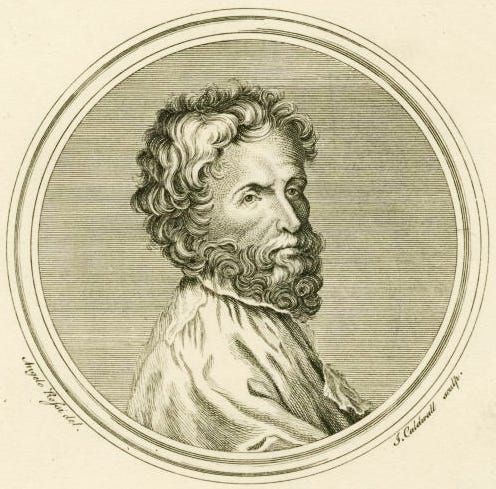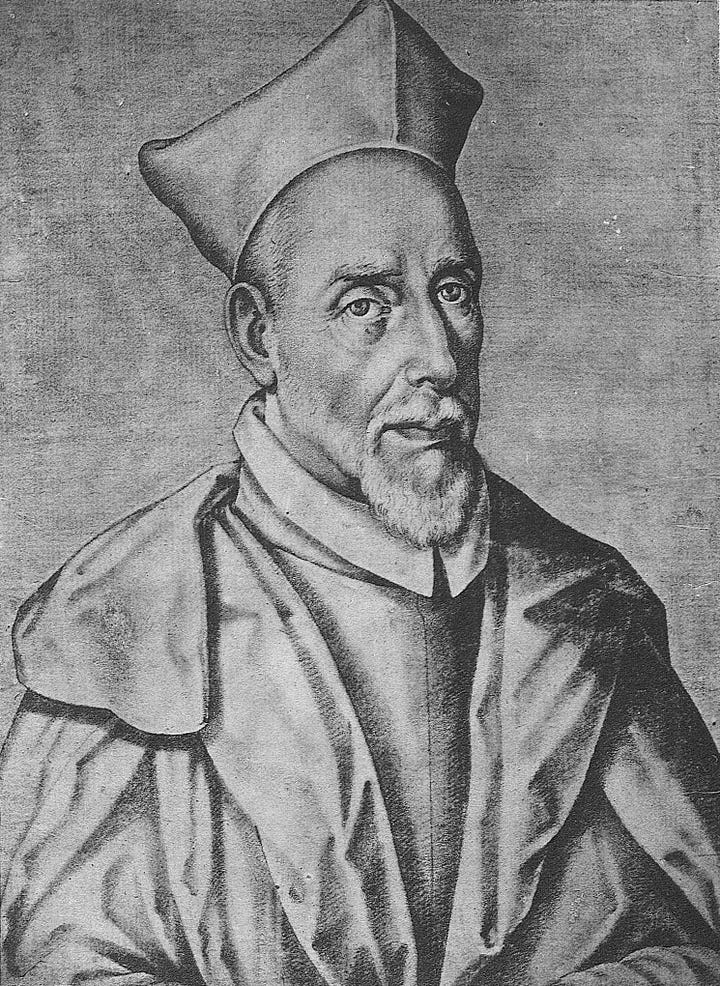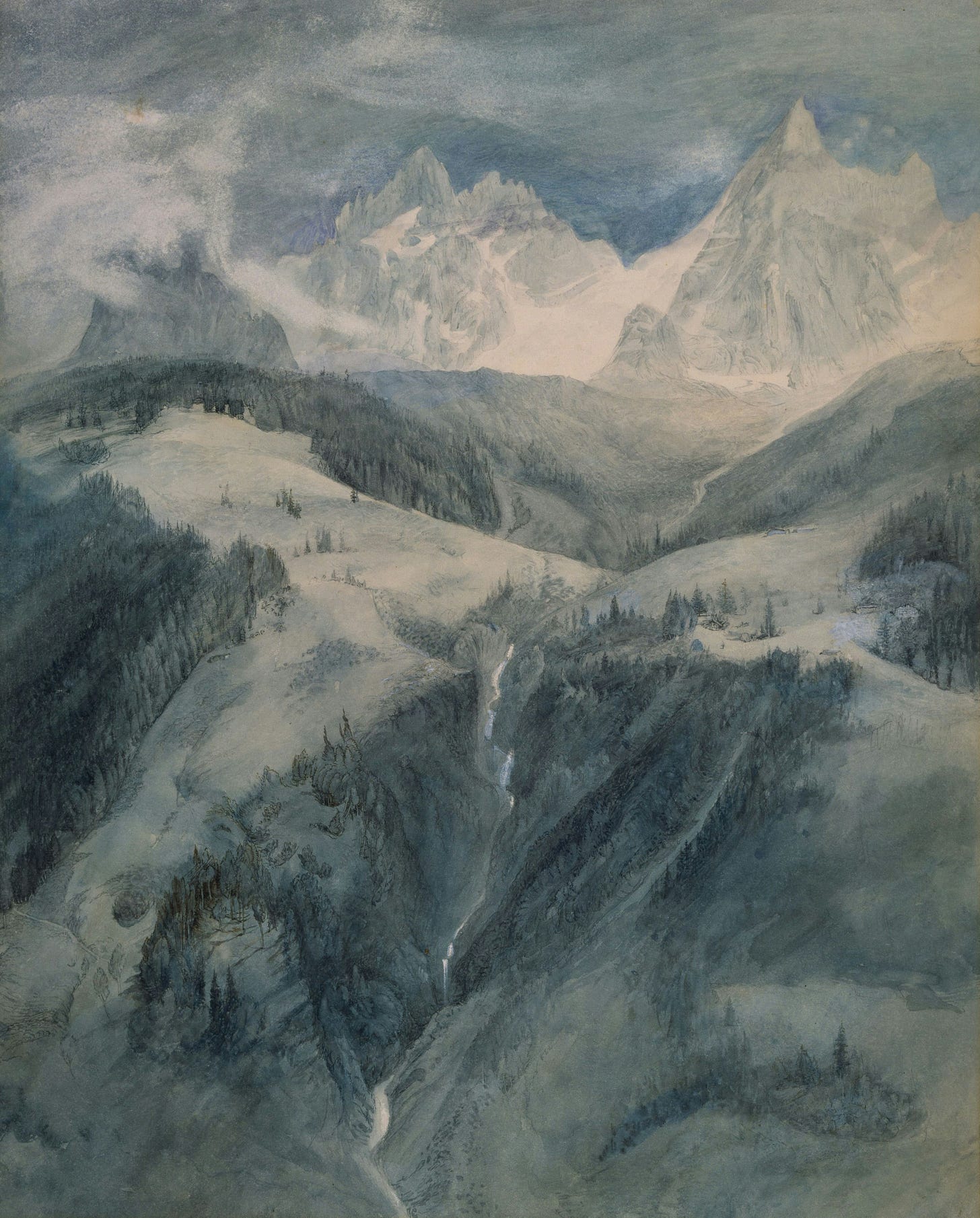A Tour of Great Music of the Spanish Renaissance
Vocal and instrumental music from the Iberian peninsula's Renaissance golden age
What worlds the word Spain brings to mind—conquistadors, heaps of gold, rich monarchies, fiery saints like Teresa of Avila, and rugged hills dotted with sheep in the hot sun. The country’s cultural and Catholic history is fascinating: after being almost overrun by the Moors, it became a bastion of Catholicism during the Counter-Reformation. Perhaps the fact that the peninsula had to fight so hard for their faith made it somehow harder to be swayed by the Protestant persuasion.
Whatever the case, it seems true that Catholicism is somehow more deeply rooted in the Mediterranean. I don’t know what the correlation is (and it certainly isn’t strict), but the farther north you go, the harder it seems to be Catholic: rainy England’s Anglicanism and Puritanism, cold Germanic Protestantism (followed by modern Germanic existentialism and atheism), and Lutheran Scandinavia. Meanwhile, in sunny Spain…Catholicism. In sunny, papal Italy…Catholicism. In sunny Greece…Orthodoxy. Caught in between, mostly sunny France waffles between staunch Catholicism, Gallicanism, the Huguenot Protestants, and finally Enlightenment rationalism. Catholic Poland and Orthodox Russia are of course the two big exceptions up North.
At any rate, the sunny, Catholic climate of Spain was a fertile ground for centuries of Catholic arts. In this piece, I’d like to introduce some musical “greats” of the Spanish Renaissance, covering the highlights of their sacred choral music before sharing some of their intense instrumental compositions.
(Please note that the voiceover contains musical excerpts of all the pieces featured in this post!)
Spanish Singer’s Victorious Victoria
Hopefully you have all heard of Tomás Luis de Victoria: he is the unquestioned king of the Spanish Renaissance.
The seventh of nine children, Victoria was born in 1548 (probably) in the province of Ávila, Castile. He was a choirboy at the Ávila Cathedral, and also studied at St Giles's boys school, an institution highly regarded by St Teresa of Ávila among others. In 1565 he traveled to Rome, where he would work for over twenty years. Well regarded among ecclesiastics, he held positions at the Pontifical Roman Seminary and the German College founded by his compatriot Saint Ignatius. In 1574 Victoria was ordained a priest, presumably having been on the clerical track since a young age. It is supposed that he must have met Palestrina, although there is no record of this; we know Victoria did attend the maestro’s funeral in 1594.
In 1587 King Phillip II of Spain (who had already been his patron for some time) allowed him to return to his homeland, and appointed Victoria chaplain to a monastery in Madrid where the Dowager Empress Maria was living in retirement. Victoria served as the Empress's private chaplain and also as convent organist — such a noble convent needed music of the finest quality.
Victoria’s musical output is “High Renaissance” polyphony through and through. Filled with more tonal and rhythmic contrasts than his Italian counterparts such as Palestrina, Victoria’s vocal music conveys a mystical passion, a tonal chiaroscuro that alternately warms the heart and twists the innards.
Without a doubt, his Requiem Mass for six voices is his magnum opus, and illustrates well the characteristics described above. Here is Nigel Short’s Tenebrae Choir singing the Mass:
All the movements open with the Gregorian Chant incipit, a beautiful homage to how the Renaissance composers married musical tradition to new invention. The floating chant hovers on the air for a moment in monochrome, before the voices rise and, like the sun, cast tonal rays of rose and gold into the ear.
I love the musical treatment of the offertory antiphon text:
Lord Jesus Christ, King of glory,
deliver the souls of all the faithful departed
from the pains of hell and from the bottomless pit:
deliver them from the lion’s mouth,
that Tartarus swallow them not up,
that they fall not into darkness,
but let the standard-bearer holy Michael
lead them into that holy light:
Response: Which Thou didst promise of old to Abraham and to his seed.Verse: We offer to Thee, O Lord,
sacrifices and prayers:
do Thou receive them in behalf of those souls
of whom we make memorial this day.
Grant them, O Lord, to pass from death to that life,Response: Which Thou didst promise of old to Abraham and to his seed.
Each phrase flows, builds, and ebbs away. On the words “fall not into darkness,” the voices suddenly switch to a low-voiced chord, before climbing again in layers to sing of the standard-bearer Michael: and the texture suddenly smooths out and cadences on “holy light” and the promise of Abraham. (As a side note, this Requiem offertory preserves the format of a responsory which all offertories used to have: you can still find a few monasteries where melismatic verses are sung on feast-days.)
While I would love to comment further on this Mass, I will just point out that you absolutely must listen to the responsory, Libera me, sung for the incensing of the coffin, and the matching motet Versa est in luctum, which takes a prophetic text of the Old Testament about tuning one’s harp “to the voice of weeping”:
My harp is turned to grieving
and my flute to the voice of those who weep.
Spare me, O Lord, for my days are as nothing.
Here’s the Cambridge Taverner Choir (although it’s also on the album above) with the score scrolling past, in case you want to read along with it.
Of special note is how the piece builds, and peaks on “my days are as nothing” with the high F repeated again and again in the soprano and tenor lines, pulsing out over and over again. Throughout the motet, the music uses considerably more chromatic shifts than Palestrina ever would. Even though the words “my days are as nothing” serve as the foundation for an almost violent, writhing pinnacle, they are repeated to form the last part of the motet as well. Here, like the rapids of a narrow stream suddenly widening out, the music stills, and becomes consonant, flowing with the tired peace that comes after a bout of intense weeping. Let me know if you agree that the shift in measures 47-49 (2:48-2:56 in the video timestamp) sounds exactly the way it feels after you’ve cried deeply about something.
Pages and pages could be written about Victoria’s extensive work. I’ve included numerous other pieces, especially his music for Holy Week, in the playlist that accompanies this article:
It’s time to move on… But the albums from which I’ve selected tracks for this playlist will allow you to explore the musical victories of Victoria on your own.
Moody Morales and Gallivanting Guerrero


If Victoria’s requiem wasn’t dark enough for you, Victoria’s near contemporary Cristóbal de Morales (c. 1500-1553) can supply any lack with his piercing cycle of Lamentations from Jeremiah. The Belgian ensemble Utopia does a fantastic job with them.
Here is the full album (although several of the tracks are on my Spanish Playlist mentioned above):
Morales was born in Seville and, like Victoria, received an excellent education in both music and the liberal arts. Little is known of his family and of his various posts. He certainly spent time in Italy, where he was a papal singer. While he was widely esteemed in his lifetime (one contemporary calling him “the light of Spain in music”), he had a hard time keeping his positions. Over a hundred motets survive, along with numerous Masses, and 18 settings of the Magnificat. His five voice Requiem gives Victoria’s Requiem stiff competition, although its style is less florid. I’ve had the privilege of singing several movements from it, and especially love Jordi Savall’s direction of it with instruments playing the vocal lines along with the singers—a historical practice well attested to:
Like Victoria and Morales, the third vocal composer I’d like to introduce you to was also a priest: Francisco Guerrero (1528–1599). Already a renowned musician as a teenager, he was appointed cathedral music director of Jaén when he was 18 years old. Guerrero traveled throughout the Iberian peninsula, to Italy, and in 1589 to the Holy Land. His adventures included visiting Damascus, Bethlehem, and Jerusalem — and on the return journey being attacked by pirates who held him for ransom!
The following year, he published an account of his trip, which offers a fascinating glimpse of the Catholic atmosphere of the time. Here is the account of how his work as a composer led to a desire to visit the Holy Land:
Everyone in this profession [of musician] knows that we have a very particular obligation to compose the Chançonettes and Vilhancicos [types of sacred songs] in praise of the Birth of Jesus Christ our Lord, our Savior, and our God, and of His Most Holy Mother, the Virgin Mary, our Lady; and when I composed the texts for the Matins of such a bright night [i.e., Christmas], and Bethlehem was named, my devotion and desire to see and celebrate these songs in that Most Holy Place in the company and memory of the Angels and Shepherds who had begun to teach us about this Divine Feast was intensified. And although this desire was so great, it seemed impossible for me to achieve it, because of the many inconveniences that existed at the time, especially that of my parents. I decided, although I didn't make a vow, that if God gave me a longer life than theirs, I would make this holy journey: and so, when God took them away from this life, it seemed to me that I had made the biggest part of this journey already.
When he gets to Bethlehem, he has this to say:
As a musician, I had a thousand desires and longings to have the best musicians in the world there, with voices as well as all the instruments, to chant and sing a thousand vilhancicos and chansonettes to the Child Jesus, to his Blessed Mother, and to the glorious St. Joseph, in the company of the Angels, Kings and Shepherds who were in that room; which, although it seemed poor, exceeded all the riches imaginable.1
Guerrero’s kidnapping and the ransom that had to be paid got him into financial trouble, however, and he spent time in debtor’s prison on his return to Spain. The Seville Cathedral where he had worked as a young man eventually pulled him out, and he died of the plague nine years later.
My all-time favorite piece of Guerrero’s is his “Ave Maria,” a vocal motet very popular in its time (and still with choirs today). Here it is being performed with voice and lute, where the lower lines are “intabulated” or transferred to the archlute:
Another grand piece of his is the mighty three-choir “Duo Seraphim,” where the symbolism of the “three” who witness in heaven are represented by various voices joining and separating. I’ve also inserted that one into the Spanish Playlist.
The contemporaries Victoria and Guerrero, along with their slight predecessor Morales, bear witness to the fiery spirit of the Iberian composers of sacred music. I hope you enjoy their meditative intensity!
Iberian Instrumentalists (and the Spanish Bach)
While the priest composers were scribbling away at their motets, the instrumental, secular musical life of Spain was by no means floundering. As a postlude, I’ll share a few instrumental composers.
Spain was an important country for the early development of solo lute repertoire, and their special version has its own special name. The vihuela is an early plucked-string instrument, with a guitar-like body, but tuned like a lute. In essence, it is the Spanish equivalent of the lute. To distinguish it from the early fiddle, the vihuela de arco (“viol of the bow”), it became known as the vihuela de mano—“of the hand,” i.e. plucked with the bare fingers. As flat-backed lutes, they evolved in the Kingdom of Aragón, spread throughout Spain and Portugal, then sadly faded into obscurity by the Baroque period.
Composers for the vihuela include Luis de Milán (one of the first musicians to specify tempo in his compositions), Luis de Narváez, Alonso Mudarra (technically the first guitar composer), Enríquez de Valderrábano, and others.
In another vein, Diego Ortiz developed music for bowed instruments. In his first book, Trattado de Glosas, Ortiz offers music for the viola da gamba, while in his second he presents vocal music with the recommendation that instrumentalists play along with the singers — a practice you can hear Jordi Savall take up in numerous pieces by Guerrero and Morales.
Here’s my Iberian Instrumental playlist, with favorites from all composers mentioned above.
Both Ortiz and other vihuela and guitar composers have many upbeat pieces, alongside somber processionals and preludes. Organ music flourished in Spain at this time (remember Victoria was also an organist), and I find the work of Juan Bautista José Cabanilles (1644-1712) especially splendid.
While you can see from his dates that Cabanilles falls firmly into the Baroque period, his music fits well with those of earlier instrumentalists. Cabanilles has been called “the Spanish Bach,” and one can see why. His polyphonic instrumentals are brooding, melodically inventive, and harmonically rich — just as Bach’s fugues or sonatas — but with a Spanish flavor. I began listening to Jordi Savall’s album of Cabanilles music in high school, and to me it is filled with nostalgia for teenage meditation. It sounds like a vast mountain landscape, like the soundtrack of some fantasy adventure.
This is an example of the sort of image that comes to mind when I listen to these fantasias:

Savall’s recording — which I’ve mixed into the playlist above — is somewhat unique by giving the parts to instruments, rather than playing the polyphony just on the organ (which is also possible). This practice of instrumental music in liturgies where today we would think only of organ music was common in Spain; in addition to trumpets, viols, and the Spanish harp, drums also lent solemnity to processions. This is something we need to bring back, if you ask me!
I hope this ride from Victoria to Cabanilles wasn’t to short or too long — but just the right length to get you hooked on the fervent music of a great Catholic country.
Thanks so much for reading!
If you enjoy my work here on my dad’s Tradition and Sanity Substack, please consider giving me a small tip via my buymeacoffee.com page, where you can make a one-time or recurring donation to support my writing. Thank you!
Postscript
While I’ve chosen to refrain from getting into Spanish-language music in this article — a whole world to itself! — I couldn’t resist closing with this hauntingly chromatic piece. Here is the text:
That snowy range which looks like a thick cloud
Becomes brown rock in the heat of summer.Tired hope, mortal remedy,
what do you want of me now?
Let me die, die without hope,
for there is no constancy except in my misfortune.






This was wonderful. I would love more articles that introduce some lesser known composers, for those of us who could stand to have a Virgil-esque guide through the expansive world of classical music.
¡Gracias Julián! :) As a Spaniard living in Florida, this made my heart (and ears) happy. Morales' Lamentations from Jeremiah are particularly powerful, but I admit shedding a tear at Guerrero's Ave Maria. Beautiful piece -we definitely would like more!